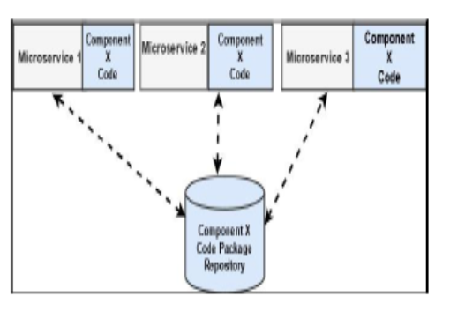


Indian Journal of Science and Technology
Year: 2022, Volume: 15, Issue: 36, Pages: 1808-1814
Original Article
Nagalambika1*, L Manjunath Rao2
1Research Scholar, Department of MCA, Dr. Ambedkar Institute of Technology, Bangalore - 560056, Karnataka, India
2Professor, Department of MCA, Dr. Ambedkar Institute of Technology, Bangalore, Karnataka - 560056, India
*Corresponding Author
Email: [email protected]
Received Date:29 January 2022, Accepted Date:01 September 2022, Published Date:22 September 2022
Background/Objectives: In a distributed development environment, the different teams share the code leading to dependencies and shadowing the purpose of microservices. This study is to propose the technique of component reusability in Online Order Management to measure the reusability in terms of lib reuse, product customization and vendor services. Methods: The case study on online order management software was analysed, developed and tested. The mean and standard deviation are calculated to what extent OOM projects can be reused in other application domains like audio, business, communication, games, software development, library management, home utilities and education. The source of our descriptive analysis is the Kruskal- Wallis test. Reusability is calculated by three markers: lib-reuse, Reusefrequency and throughput. The proposed technique is efficient in terms of throughput. Findings: The presented case study is a practical application that illustrates the percentage of reusability of the proposed model. This will not only minimize engineering efforts but also reduces resource costs. Reusability is directly proportional to resource cost. More the reuse percentage lesser the resource cost. The results have shown the reusability percentage for each domain. Projects are selected based on popularity from GitHub and BitBucket. Novelty: The novelty of the proposed approach lies in the fact that the specific application domains can be considered as reusing assets from open-source software projects. The proposed approach increases the autonomy between the teams and also helps teams to operate with minimal dependencies. The software professionals can benefit from the proposed methods.
Keywords: Reusability; Microservices; Extreme Programming
© 2022 Nagalambika & Rao. This is an open-access article distributed under the terms of the Creative Commons Attribution License, which permits unrestricted use, distribution, and reproduction in any medium, provided the original author and source are credited.
Published By Indian Society for Education and Environment (iSee)
Subscribe now for latest articles and news.